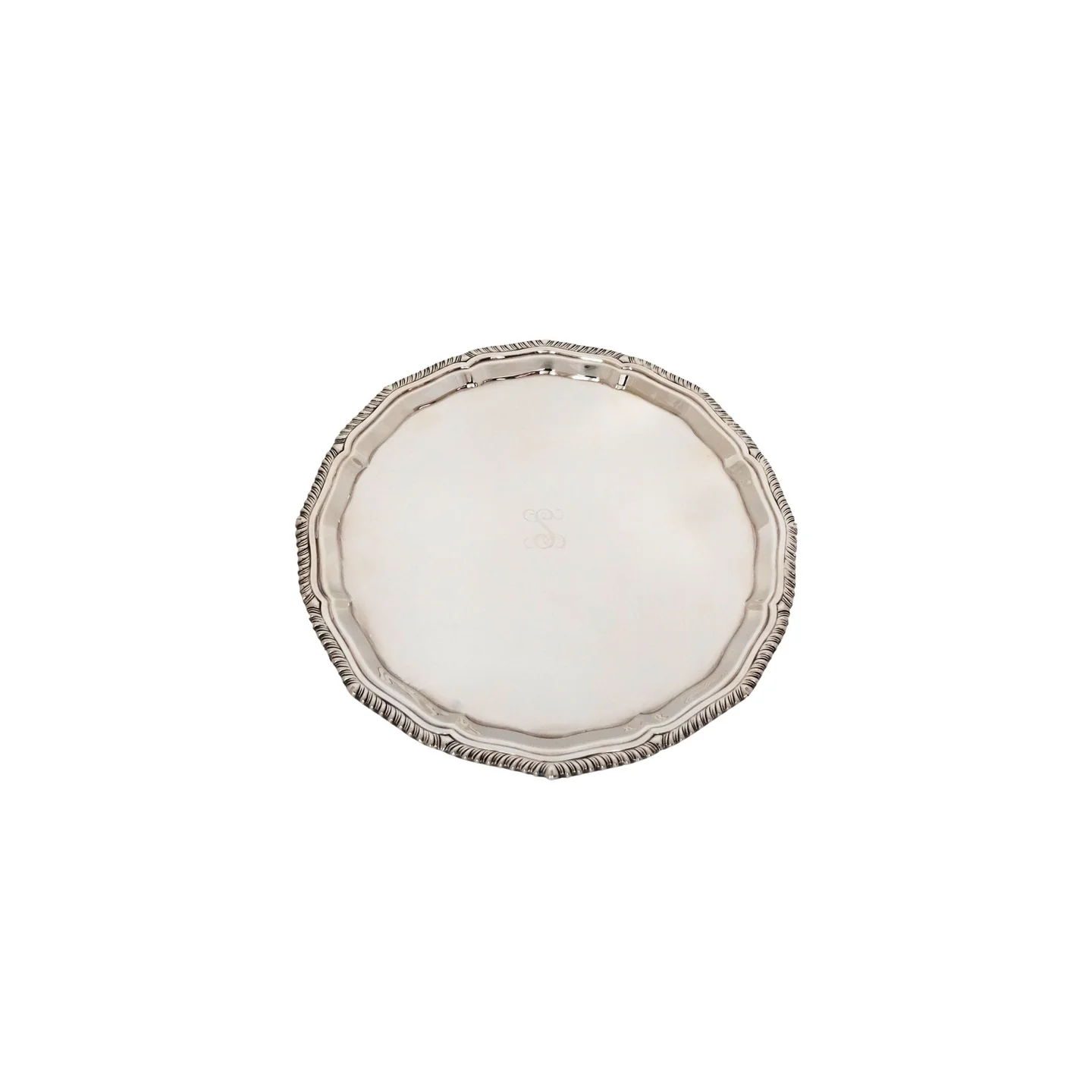
A silver salver is a flat serving tray, traditionally made of silver or silver-plated materials, used for presenting food, drinks, or ceremonial items. Unlike a standard tray, a salver typically lacks handles and features a raised edge. It has been a staple in aristocratic households, formal dining settings, and official ceremonies for centuries.
What Is the History of the Silver Salver?
The concept of the salver dates back to the 17th century, when European nobility used them for serving drinks and displaying luxury items. The name “salver” is derived from the Latin word salvare, meaning “to save” or “to protect.” This likely refers to their historical use in presenting food and drinks that had been tested for poison.
During the Georgian and Victorian eras, silver salvers became an essential element of formal dining culture. Wealthy households and royalty often commissioned intricate designs, featuring elaborate engravings and family crests. By the 19th century, with the expansion of the middle class, silver-plated salvers became more accessible, making them popular for formal entertaining and gifting.
What Are the Different Types of Silver Salvers?
There are several styles of silver salvers, each with distinct features:
- Plain Salvers – These are simple, elegant trays with a smooth surface, used for serving food or drinks in formal settings.
- Chased or Engraved Salvers – These feature decorative patterns or monograms, making them ideal for presentation or gifting.
- Footed Salvers – These are raised on small feet, enhancing their aesthetic appeal and making them more stable when placed on a table.
- Gallery Salvers – These include a pierced or raised rim, designed to keep items securely in place while serving.
- Presentation Salvers – Often awarded in sports and corporate events, these bear inscriptions or awards to commemorate achievements.
What Are the Uses of a Silver Salver?
Silver salvers serve multiple purposes in both historical and modern contexts:
- Formal Dining: Used for serving drinks, appetizers, and desserts in high-end restaurants and banquets.
- Ceremonial Functions: Often used in official ceremonies, such as presenting medals, honors, or documents.
- Corporate and Sports Awards: Engraved silver salvers are popular choices for trophies and commemorations.
- Home Decor: Many collectors and enthusiasts display antique silver salvers as decorative pieces.
- Gift Giving: Personalized silver salvers make timeless and elegant gifts for weddings, anniversaries, or retirements.
How to Care for a Silver Salver?
Proper maintenance ensures that silver salvers retain their beauty and value over time. Here are key tips for cleaning and preserving them:
- Regular Polishing: Use a silver polish and a soft cloth to prevent tarnishing.
- Proper Storage: Store in anti-tarnish cloth or pouches to reduce exposure to air and moisture.
- Gentle Cleaning: Avoid abrasive cleaners; instead, wash with warm water and mild soap.
- Avoid Contact with Acidic Foods: Exposure to citrus or vinegar can cause tarnishing or damage.
- Use with Care: Handle delicately to avoid scratches and dents.
Why Are Silver Salvers Valuable?
Silver salvers hold both historical and monetary value. Antique pieces, especially those from renowned silversmiths like Paul Storr or those bearing royal insignia, can be highly sought after by collectors. The craftsmanship, material purity, and condition significantly impact their worth. Even modern silver-plated salvers have sentimental and decorative appeal, making them a cherished addition to formal settings.
Conclusion
The silver salver is more than just a serving tray; it represents a legacy of craftsmanship, elegance, and tradition. Whether used for dining, decoration, or awards, it remains a symbol of prestige and refinement. With proper care, these timeless pieces can be preserved for generations, maintaining their beauty and historical significance.